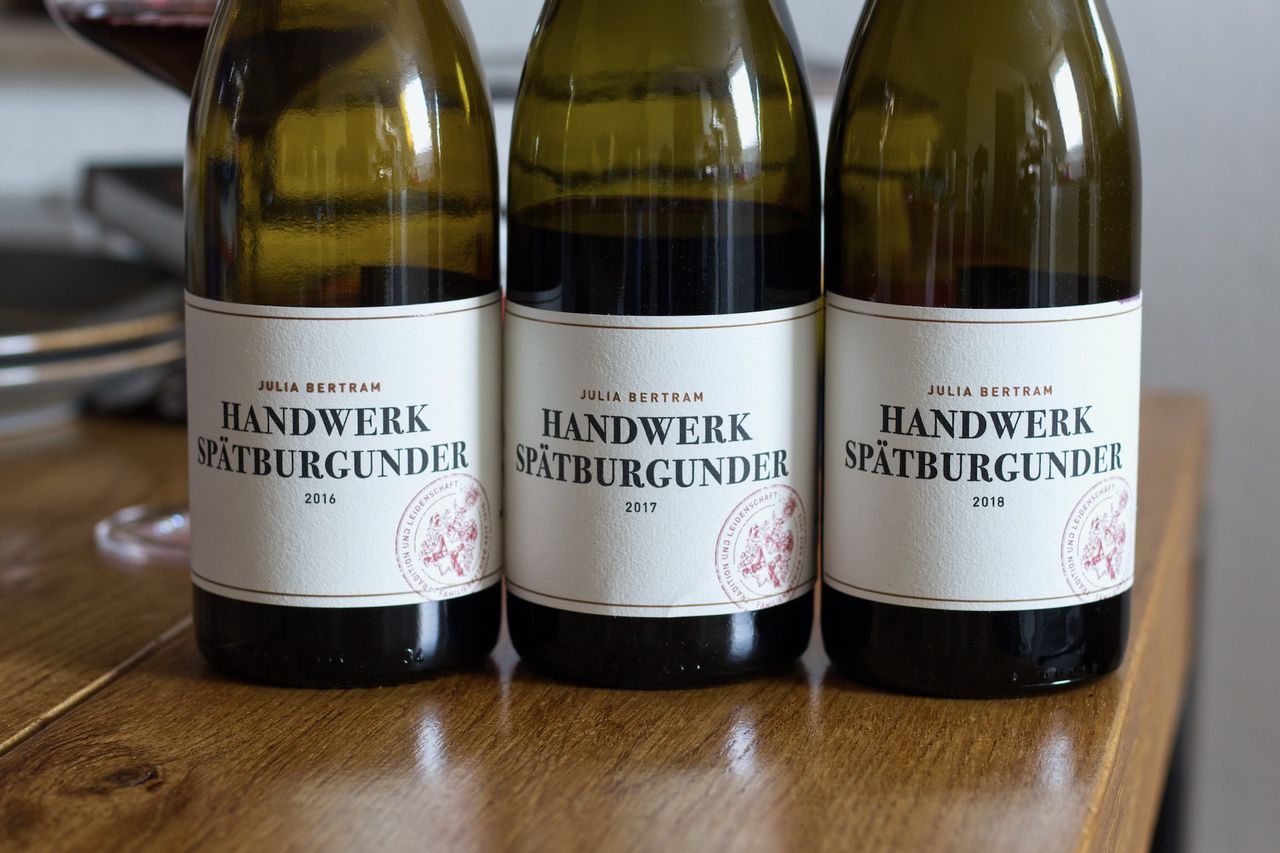Julia Bertram - Handwerk
We drink three Spätburgunder Handwerk by Julia Bertram from the years 2016, 2017 and 2018.

The first wine from the Ahr in the blog, and also in our daily lives, away from the blog, the wines we have had from the Ahr so far are few. So there is a lot of catching up to do. The Ahr is a red wine region. Well over 80% of the vineyard area is planted with red grapes and with more than 60% of the vineyard area Pinot Noir dominates. So it is obvious to start with this variety. We are drinking three entry-level Pinot Noir Handwerk by Julia Bertram. Right now, however, the winery is called Bertram-Baltes, as Julia Bertram makes the wines together with Benedikt Baltes, of whom we have already had a Portugieser in our glasses. The Handwerk as an introduction to the range and then tasting three vintages is, in my opinion, a nice start, both for the wines from Julia Bertram and the red wines from the Ahr. She ferments the wines spontaneously after the manual harvest and they are matured in used wooden barrels.
We smell dark berries and cherries in the 2016. With a little spice alongside the fruit. The wine only needs a little bit of time to fully shine. You can feel the cherry also on the tongue. A bit of wood with a fine structure and a minimal undergrowth note complete the taste. Air adds warmth to the otherwise rather cool aromas. Raspberries, black currant and blueberry yoghurt are there. The wine is full but not heavy.
After a night, ethereal notes develop. You can slightly feel the few years on the bottle, everything is harmoniously elegant and velvety soft. The fruit tends to recede and now stands on an equal footing with the other aromas. At the same time there is now much more blueberry than cherry in the nose.
The Handwerk from 2017 on the other hand starts as a light stinker. At first much less fruit than the wine from the previous year had. Not so velvety, rather juicy fresh with a bite of acidity. A bit animal stable, more mineral in structure and even brighter in aroma. This one needs a lot more air to get going. Then there is meat juice in the nose, fresh raspberries and diluted beetroot juice. The fruit is much fresher than in the previous vintage.
Even after a night in the fridge the wine needs air to open up. The beetroot stays, the red meat too. A bit earthy, a bit hearty, a bit crisp and fresh. At the very end of the evening, in the last sips, the fruit really comes out of its shell and takes over. We certainly opened the wine a bit too early, or alternatively we should have allowed it to breathe at least one more day in the open bottle. Nevertheless, I think it is great in its current state.
The last vintage, 2018, also starts with a little stinker. But it heads in a completely different direction, more cellar vaults than animal stables. It’s reductive and you can’t get rid of the impression that there is still carbon dioxide from fermentation in the bottle. The acidity is even more crisp, the wine is less defined than 2017. Here it is even clearer that we are too early. At least on the first evening this cannot be remedied by air. The stink changes from vaulted cellar to other aromas but the charm of the other two does not want to come up. On the tongue it is less tragic, fresh juiciness dominates and the wine yields quite some fun.
Interestingly, the night in the fridge helps much more in 2018 than it did in 2017. The muff disappears, the fruit comes out in full. Sour cherry and red berries on the nose and in the taste and the tannin also changes. Becomes silkier and softer. Along comes a little dark chocolate. Nevertheless, it remains as a great realisation that in this case, the estate wine should also wait a few years longer in the cellar. All in all however, all three wines were worth it.